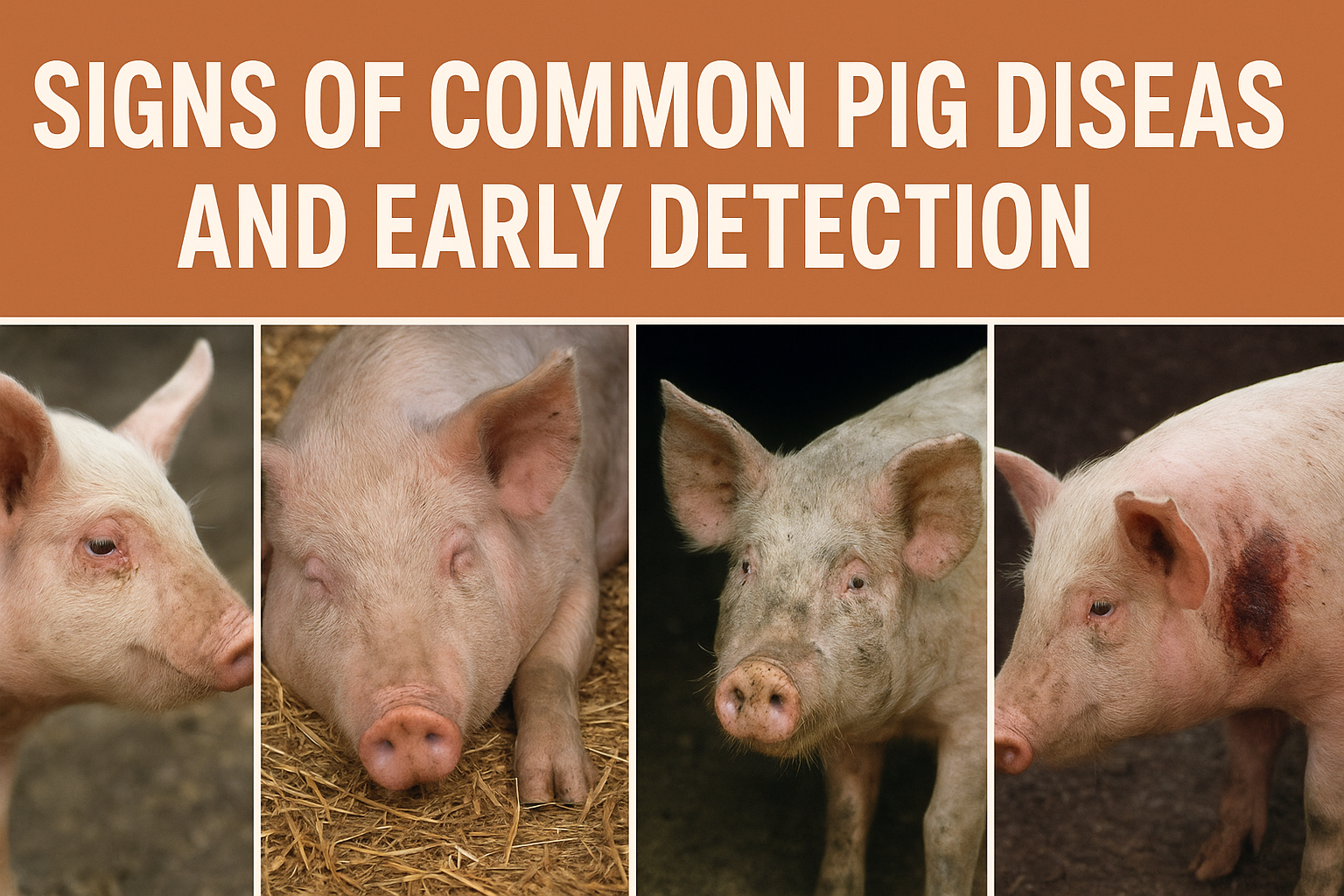Early detection of pig diseases is crucial in maintaining herd health and preventing severe outbreaks. Recognizing the signs of common pig diseases allows farmers to act quickly, reducing mortality and minimizing losses. Whether you run a small backyard farm or a large-scale swine operation, knowing what symptoms to watch out for can make all the difference.
Common Signs of Pig Diseases
1. Loss of Appetite
A sudden refusal to eat or reduced feed intake is one of the first indicators of illness. Healthy pigs are active eaters, so any change in feeding behavior should be noted immediately.
2. Coughing, Sneezing, or Labored Breathing
Respiratory issues can signal diseases such as swine influenza, mycoplasma pneumonia, or PRRS. Persistent coughing or nasal discharge should be taken seriously.
3. Diarrhea
Watery or bloody stools can indicate infections like E. coli, TGE (Transmissible Gastroenteritis), or other gastrointestinal problems. Young piglets are especially vulnerable.
4. Lethargy and Weakness
Pigs that isolate themselves, show reduced activity, or lie down more than usual may be battling disease.
5. Fever
Elevated body temperature (above 40°C or 104°F) is a key sign of infection and should be checked with a thermometer.
6. Skin Lesions or Discoloration
Red or purple patches on the skin may indicate conditions like erysipelas or septicemia. Wounds that do not heal can also harbor infection.
7. Swelling
Swollen joints, neck, or abdomen may be linked to infections or parasitic infestations.
Importance of Early Detection
Detecting diseases early not only prevents death but also helps protect the entire herd. Farmers should establish routine health checks and isolate sick pigs immediately to reduce disease spread.
Prevention and Next Steps
- Practice strict farm biosecurity (footbaths, visitor control, pest management).
- Keep accurate records of pig health and vaccination schedules.
- Consult a veterinarian when symptoms persist or worsen.
Conclusion
By paying attention to changes in eating habits, appearance, and behavior, farmers can spot diseases in their early stages. With quick action, proper veterinary care, and strong biosecurity, pig health can be safeguarded effectively.

